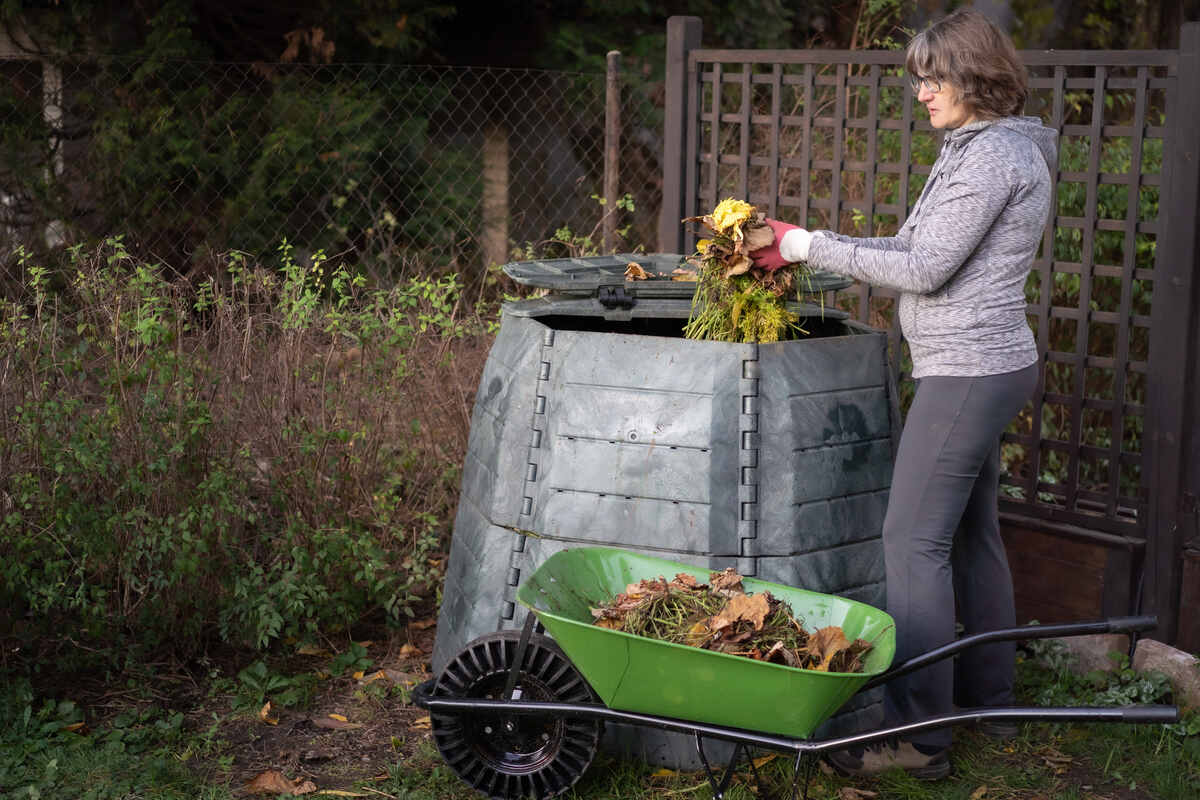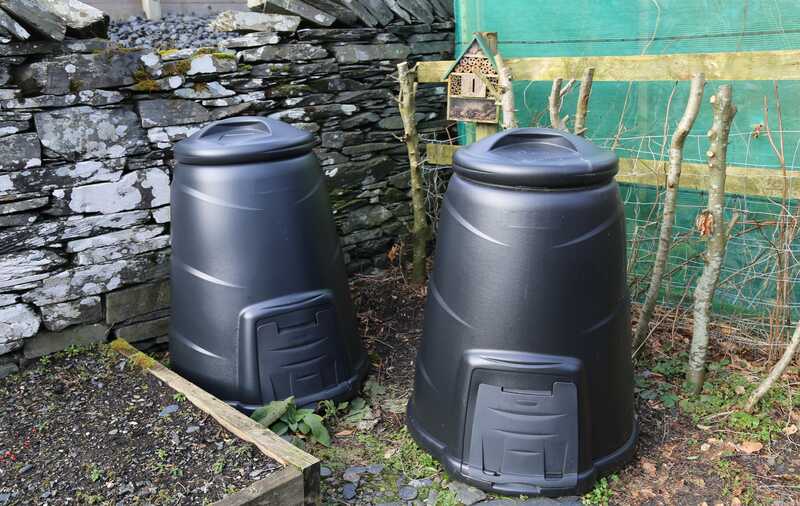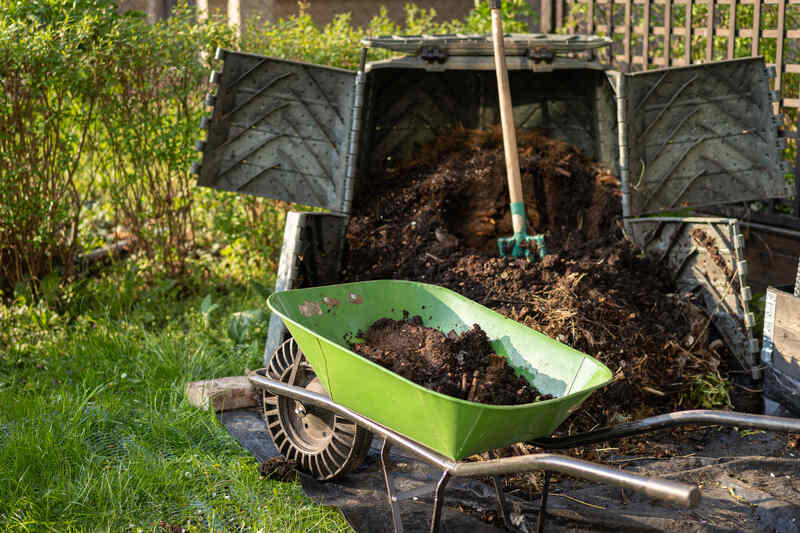
Nobody wants to open their compost bin and come face to face with pesky rodents, ants, or flies. Fortunately, keeping pests out of your compost bin is easier than you might think.
Start by buying or creating a pest-proof bin made of sturdy material with a tight-fitting, locking lid. Skip composting meat and dairy, bury food scraps when you add them, and follow other good maintenance practices with moisture and aeration.
With the right attention, you can keep your bin pest-free and thriving!
- 1. Pest-Proof Your Compost Bin
- 2. Build It Away from Natural Food Sources
- 3. Avoid Attracting Pests to Your Compost Bin
- 4. Bury Food Scraps
- 5. Balance Green and Brown Materials
- 6. Use Natural Deterrents
- 7. Aerate Regularly
- 8. Manage the Moisture Levels
- 9. Keep the Area Clean
- FAQ About Keeping Pests Out of Your Compost Bin
There are many different ways to compost, but for the sake of simplicity, in this article, I’m going to cover general ways to keep pests out of your compost, whether it be a bin, tumbler, or pile.
1. Pest-Proof Your Compost Bin

The best line of defense, especially if you live in an area with known rodent problems, is buying a compost bin labeled as pest-proof. However, if you already have a bin, you don’t need to rush out and buy a new one. Using some of the following tips, you can also make an existing compost bin as pest-proof as possible.
Choose a Sturdy Material
To start with, when buying a new compost bin, look for one made of durable material, such as heavy-duty plastic or metal. Something sturdy will act as the first line of defense and help prevent pests from chewing through it to get to the materials inside.
Have a Tight-Fitting, Locking Lid
Make sure the lid fits tightly so there are no gaps around the edges when it is fully closed. Rodents can get into small spaces — mice can squeeze through a hole as small as one-quarter inch, and rats only need a half inch! If there are gaps around the lid, you can use weatherstripping material from your local hardware store to seal them.
Taking it one step further with your lid, buying a bin with a locking lid is an extra measure to keeping pests out of your compost. If you’re handy, and you can drill into the bin material you can always add a hook and eye latch or a barrel bolt/slide latch to secure the lid.
If you can’t add a latch, set something heavy like a concrete paver or a large rock on the lid or strap a bungee cord across it and fasten it to the sides to keep it from being nosed open by pests.
Cover the Ventilation Holes
Your bin needs holes to let oxygen in and water out, but you don’t want those holes to be an entrance for pests and insects. Look for a bin that has mesh screen covering all of the ventilation holes, or line the inside of the holes yourself.
Pro Tip: When lining ventilation holes, you want to choose a mesh screen with finer, smaller holes, so the compost or materials don’t fall out when you turn the bin. Look for one-quarter inch hardware cloth in 18-22 gauge wire.
Place Your Compost Pile off the Ground
A bin close to or on the ground has its advantages — coming in at the top of the list is easy access for you to add and turn materials. The problem, though, is easy access for you also means easy access for pests.
Avoid building a compost pile directly on the ground. That’s an open invitation for problems. To make it harder for pests to access, you can put it on a stand or set it on a pile of bricks or cement blocks. If you do use bricks or blocks, be careful when stacking them so you don’t inadvertently build a ladder for pests to climb.
Reinforce the Bottom
If your bin sits on the ground, add wire mesh or hardware cloth under it (even buried an inch or two) to keep burrowing pests from tunneling underneath and coming up through the ground.
The Solana Center recommends using hardware cloth to line the bottom and outside walls of your bin: “For mice, 0.5 cm (1/4 in), 16 gauge should be used; 1 cm (1/2 in), 20 gauge for keeping out larger pests. (Hardware cloth is galvanized wire mesh, available at most home improvement/hardware stores. Chicken wire is not a good protection against unwanted visitors).”
Some people will put their bin on a concrete pad or build a sand base to set it on.
2. Build It Away from Natural Food Sources
Once you get your new compost bin home, take a few minutes to carefully think about its location. Choosing the best spot for your compost bin will help to naturally keep pests out of it.
Place your compost bin away from bird feeders, animal feeders, pet bowls, garbage bins, trees or shrubs with berries, and vegetable gardens — any place that serves as a food source for rodents. Any pests that come into your yard to eat those items will gravitate to your compost bin if it’s nearby.
3. Avoid Attracting Pests to Your Compost Bin

While you may be tempted to throw all food scraps in your compost bin, avoid composting dairy, meat, bones, fish, breads, and excessively seasoned or items high in oils. These foods tend to attract rodents and other pests more so than other foods due to their smells.
My Tip: Unsure about what’s acceptable to compost? I’ve got an article on what you can put in your bin!
4. Bury Food Scraps
Having a compost bin requires a little more effort than throwing new material on the pile whenever you have something to add. You shouldn’t put food scraps on the top of the pile without covering them or burying them inside the bin.
Ideally, you want to bury them under 12 inches of brown material. Burying these materials in the pile makes it harder for pests like flies and mice to detect and access them. Putting high nitrogen items (i.e., green materials) in the middle of the pile helps foster microbial activity, keeping the process going, and they decompose quicker when surrounded by drier, brown material.
5. Balance Green and Brown Materials
Making sure your compost is healthy and active also helps keep pests away. When the decomposition process is moving along efficiently, it gives off minimal smells. In turn, it won’t draw as much attention as a foul-smelling compost bin.
To keep the pile active it’s critical to have the correct ratio of carbon-rich “brown” materials to nitrogen-rich “green” materials. The ideal material ratio is 25 to 30 parts carbon for every one part nitrogen, or somewhere between 25:1 and 30:1 brown to green. Too much brown material and the pile will be too dry, without sufficient nitrogen for the microorganism and decomposition slows; too much green material results in a slimy, smelly situation.
Pro Tip: If you’re unsure what classifies as brown and green materials or what you can put in your compost bin, take the time to read up on how to compost. Know-how is incredibly important when it comes to composting!
6. Use Natural Deterrents
Incorporating items that naturally deter pests is another great way to keep them out of your compost bin. There are a couple of ways to do this.
- Add pungent herbs like mint or lavender to the pile.
- Crush eggshells and add them to the bin, or sprinkle them on the ground around it
- Sprinkle strong-smelling cayenne, cinnamon, or garlic powder around the bin.
- Scatter citrus peels on the ground around the bin.
- Place used cat litter (just the litter!), fur, or owl decoys near the bin to mimic predators.
7. Aerate Regularly

Turning the materials regularly — every three to four days is adequate for an actively decomposing pile — is one of the best ways to keep your compost bin from smelling. How often you turn it depends on how When it has minimal smells, it’s less likely to attract animals and other pests.
When left undisturbed, oxygen within the bin is depleted as microorganisms work, and anaerobic microbes take over the breakdown of organic matter. Compared to aerobic bacteria that release minimal odors, anaerobic bacteria produce foul-smelling gases like ammonia, methane, and hydrogen sulfide. Turning the pile reintroduces oxygen, allowing aerobic (oxygen-loving) microbes to do the work.
Plus, rats and mice prefer undisturbed spaces. If you turn and aerate your pile regularly, you’ll discourage them from setting up camp, and keep the decomposition process moving steadily.
8. Manage the Moisture Levels
Your compost pile needs adequate moisture to keep the process moving, but you must keep it from becoming too wet. It’s recommended the materials feel similar to a wrung-out sponge.
High moisture levels will create odors and attract pests, especially insects like flies. This happens because excess water in your compost creates anaerobic conditions with little oxygen available. As I talked about above, oxygen depletion triggers anaerobic microbes to take over the decomposition process, releasing unpleasant gasses as they break down materials.
If your pile becomes too wet, turn it regularly to help aerate and dry it out. You can also add brown materials like leaves, straw, newspaper, or shredded cardboard to absorb excess moisture.
Piles not enclosed in a bin are often at risk of becoming too wet, especially in rainy climates. A good way to manage the moisture level is to cover the pile to keep excess rain out.
9. Keep the Area Clean
Lastly, to keep pests out of your compost, you want to keep the area around the bin clean, as well as your yard in general.
- Clean up spilled materials, especially food scraps, when adding them or turning the bin.
- Clear overgrown grass, shrubs, and debris from the vicinity to get rid of hiding or nesting spots for rodents.
- If you have a vegetable garden, pick produce as it ripens. Don’t leave fallen veggies or fruit on the ground to rot.
FAQ About Keeping Pests Out of Your Compost Bin
Irish Spring is commonly recommended for use in yards to keep pests like deer, rabbits, and even some insects. However, it may not be very effective at keeping rodents away. In some cases, the soap has worked at deterring mice and rats, but some homeowners don’t see any change in rodent activity, or the soap may act as an attractant.
Getting rid of pests in your compost means addressing the issues that attracted them in the first place. You want to avoid using any kind of bait that could contaminate your bin. Instead, revisit what may be causing the problem.
Worst case, if you can’t get your pest problem under control, reach out to Lawn Starter, and we’ll put you in touch with a local professional to help you regain control of your compost pile.
You can try turning the compost to increase microbial activity, which raises the temperature of the pile, and may kill the maggots. Freezing food scraps before you add them may help reduce maggot problems. Boiling water or vinegar can be used to spot treat easy-to-reach infections. For heavy infestations, you can add diatomaceous earth to the bin.
Keep Your Compost Pest-Free and Your Yard Beautiful
Keeping pests out of your compost bin doesn’t have to be a hassle. By following these simple tips you can have a healthy, pest-free compost pile that’s great for your lawn and garden. Beyond composting, if you need to keep your grass or landscaping looking its best, reach out to LawnStarter, and we’ll put you in touch with a local lawn care professional.
Main Photo Credit: hopsalka / Adobe Stock Free / License